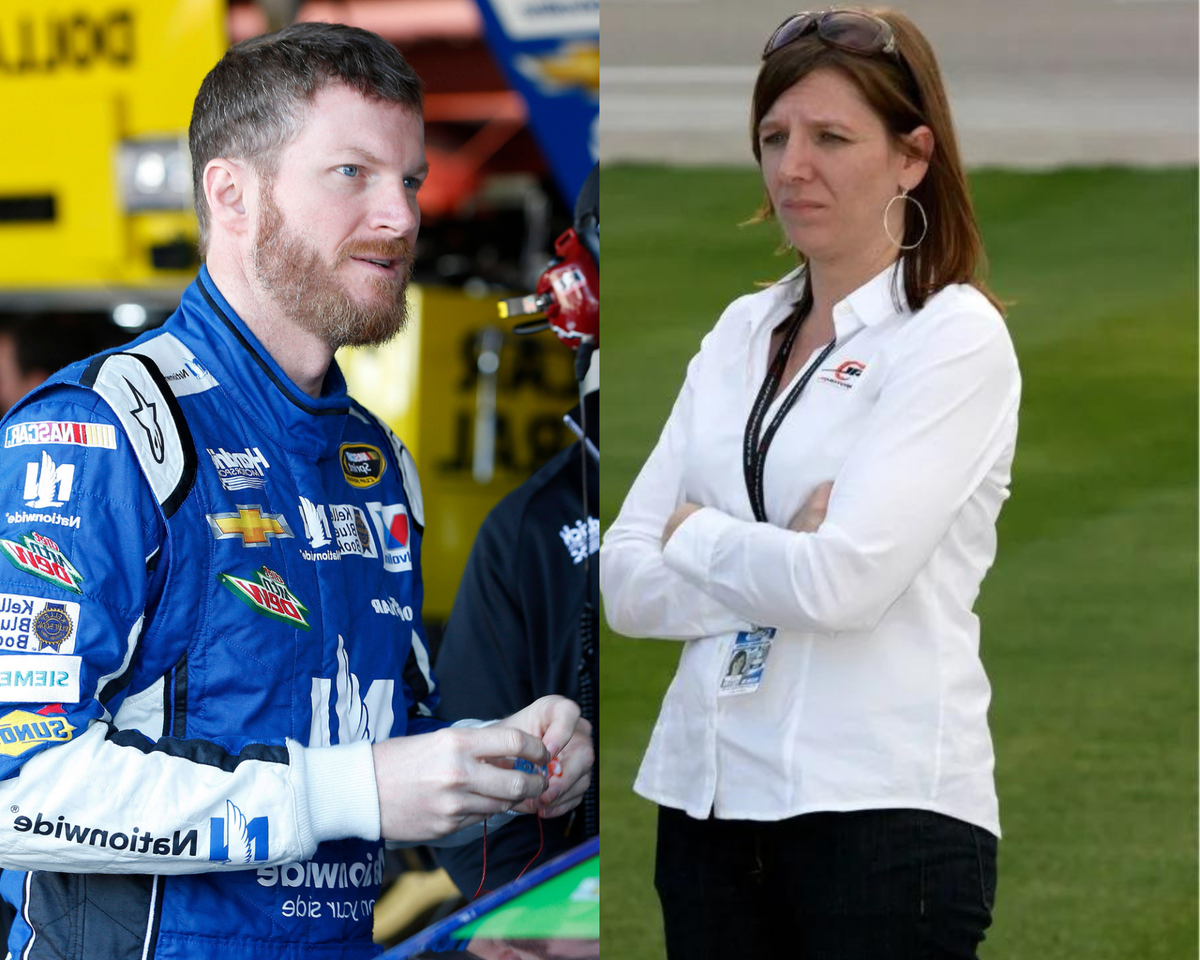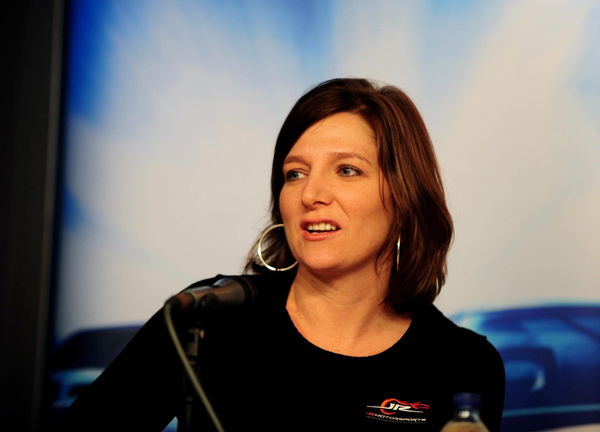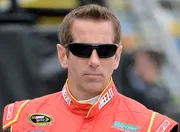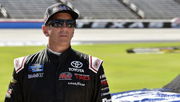
Imago
Dale Earnhardt Jr and Kelley Earnhardt Miller | Image Credits: Imago

Imago
Dale Earnhardt Jr and Kelley Earnhardt Miller | Image Credits: Imago
JR Motorsports, co-owned by Kelley Earnhardt and her brother Dale Jr., has weathered its share of turbulence behind the scenes in recent years. Kelley takes a moment to reflect on how the team navigated financial terms, sponsorship shifts, and the evolving motorsports industry, never losing sight of its mission to build success both on and off the track. From its founding as a late model development platform to its eventual rise to the Xfinity Series, JRM has relied on strategic partnerships and long-term planning.
Watch What’s Trending Now!
Yet despite the outward growth and racing accolades, Kelley emphasizes that maintaining stability in a rapidly shifting business landscape has been just as critical as winning races.
ADVERTISEMENT
Kelley Earnhardt opens up about the difficulties of modern sponsorships
JR Motorsports traces its origins back to 2002, when Dale Earnhardt Jr. launched a Late Model Street stock team at Concord Motor Speedway in North Carolina, evolving from a small operation into a fully fledged late-model program by the mid-2000s. Over the years, JRM fielded cars for rising stars like Josh Berry, William Byron, Sam Mayer, and Carson Kvapil, many of whom graduated to the NASCAR national series successfully. The JRM late model effort served as a cornerstone for developing driver talent and securing track titles, including Berry’s national championship and multiple track championships for the team.
Speaking on NASCAR Live, Kelley Earnhardt finally opened up about the internal problems that JRM faced. She went on to explain, “Then, you know, we had the financial crisis of—what that was—2008. Things looked really bleak after that. You know, I often reference the 2010 season when we—I remember going into Daytona with, I don’t know, like 11 races sponsored on a car, and we thought, you know, how is this gonna work out? What’s gonna happen? And we just kept our faith that we would push through that year and work things out.”
But as fate would have it, the financial turmoil of 2008 had a profound impact on NASCAR and its teams. Sponsorship dried up, budgets tightened, and many grassroots and development programs faced existential threats. JR Motorsports’ turning point came in mid-2007 when Dale Junior extended a lifeline to Brad Keselowski, offering him the No. 88 Navy-sponsored Chevrolet for three races, a ride that turned into a full season in the then-Nationwide Series.
ADVERTISEMENT
Brad Keselowski repaid that faith in 2008 by giving the U.S. Navy its first-ever NASCAR victory, capturing a win at Nashville Superspeedway that not only elevated his promising young career but also spotlighted the naval sponsorship as a key business anchor for JRM. The partnership, which dated back to 2005, was later confirmed to be ending after the 2008 season, a blow that forced JRM to scramble for funding amid a broad sponsorship downturn triggered by the global financial crisis.
In 2010, JR Motorsports entered the season with sponsorship gaps and a revolving driver lineup that underscored its financial strain. Kelly Bires was signed to drive the No. 88 but was benched for Daytona due to sponsor needs, and by spring, he was replaced entirely. A mix of drivers, including Jamie McMurray, Ron Fellows, Elliott Sadler, and others, filled the seat, with McMurray scoring a lone win at Atlanta. That patchwork season, full of uncertainty and shifting plans, was the uphill battle JRM had to face.
ADVERTISEMENT
Reflecting on the same, the 52-year-old said, “But, and then growing, you know, like we decided to become four cars, and we thought, ‘Oh, ok, we’ll be four cars,’ you know, maybe for a year or two. Like, there’s been bridges along the way that have really sustained our team. You know, like the years that we had Danica Patrick part-time and things like that. There’s just been bridges that every year, when we look at what business is gonna look like, we don’t look at just next year. We say, ok, what does ‘27, you know, look like? What does ‘28 look like in the future?”

Imago
NASCAR, Motorsport, USA Sprint Cup Series: Daytona 500-Qualifying Feb 6, 2010 Daytona Beach, FL, USA Kelley Earnhardt prior to qualifying for the Daytona 500 at Daytona International Speedway. Daytona Beach Florida USA, EDITORIAL USE ONLY PUBLICATIONxINxGERxSUIxAUTxONLY Copyright: xMarkxJ.xRebilas-USAxTODAYxSportsx 4409308
JR Motorsports expanded to a four-car Xfinity lineup in 2017, adding rookie William Byron and veteran Michael Annett alongside stalwarts Justin Allgaier and Elliott Sadler. That marked JRM’s transition from a 2-3 car operation into a fully fledged four-car powerhouse. JRM also fielded a limited schedule with Danica Patrick in 2010 and 2011, part-time appearances that brought national attention and sponsor stability. This forced them to survive on a year-by-year basis.
ADVERTISEMENT
Continuing, Kelley added, “But, you know, nowadays, after that financial crisis in 2008 with businesses, and then the introduction of social media marketing and digital marketing, have changed the landscape of sponsorship so much. You know, it’s more and more difficult and challenging to figure out the value for partners, the ROI for partners, and what they’re paying—and the cost of our sport and all that. So it’s definitely harder, you know, these days than when we first started.”
The organization’s resilience has been tested repeatedly, but its persistence has paid off, culminating in the team’s 100th NASCAR Xfinity win last week, a milestone that cemented its place in sports history. Kelley, however, was the first to admit to the failure and setbacks along the way, but those lessons have shaped how JRM operates today. Now, as the 19-year-old Connor Zilisch’s eventual shift to the Cup Series becomes a growing topic of conversation, fans cannot help but wonder: Is a full-time Cup Series program the next historical leap for JRM?
Top Stories
NTSB Appeals for Greg Biffle’s Wife’s Alleged In-Flight Text Messages as Crash Investigation Heats Up

Donald Trump Issues Moving Message of Condolence for NASCAR’s Greg Biffle & Family During North Carolina Address

Another Almost Fatal Disaster Surfaces From Statesville Airport Amidst Ongoing Greg Biffle’s Crash Investigation

Air Safety Investigator Probes Possible Co-Pilot Role Amid Greg Biffle’s Fatal Plane Crash Investigation

Greg Biffle’s Haunting Aviation Admission Resurfaces Hours After Tragic NC Plane Crash

ADVERTISEMENT
Kelley drops the truth about JRM’s move from Xfinity to the Cup Series
For years, fans and insiders alike have speculated about whether JR Motorsports would eventually make the leap to the NASCAR Cup Series. The question has lingered around Dale Earnhardt Jr. and Kelley Earnhardt’s successful Xfinity operation, especially as its drivers have gone on to make names for themselves at the top level. But according to Kelley, the path to the Cup isn’t as straightforward as fans might imagine, and right now, it’s less about desire and more about practicality.
Speaking to NASCAR Live, Kelley explained that the biggest hurdle is the staggering cost of entry. Series charters are essential for fielding a competitive NASCAR Cup Series team, as they guarantee entry into every race—and they’re currently trading at record prices. Add in a pending lawsuit, shifting rules for open cars, and uncertainty around assets like the lingering Rick Ware charter, and the business picture becomes even murkier.
Beyond the finances, there is the personal factor. Kelley is 52, and Junior isn’t far behind, and their focus isn’t just on chasing new ventures; it is about balancing family, legacy, and sustainability. She admitted saying, “Neither Dale nor I really feel solid about the opportunities that have been in front of him. We’ve, you know, I’ve had conversations this year with people and opportunities, and they come up and they kind of come and go — that’s just not the right situation.”
ADVERTISEMENT
For now, the priority remains the Xfinity program that delivered them hundreds of wins and developed countless talents for the sport, as she remarked, “So you know, if the Xfinity Series can stay healthy and we can provide the opportunity that we’ve been providing for. 100 wins and to keep on doing that, and I don’t see a lot of, it’s really hard to change that business model. It’s not like we’re new coming into this, you know, so it’s just still all up in the air, nothing on the horizon that’s gonna send us in that direction right now.”
Until the right deal appears, one that aligns financially, competitively, and personally, JR Motorsports’ Cup dreams will stay up in the air, while their Xfinity dominance continues.
ADVERTISEMENT
ADVERTISEMENT
ADVERTISEMENT

